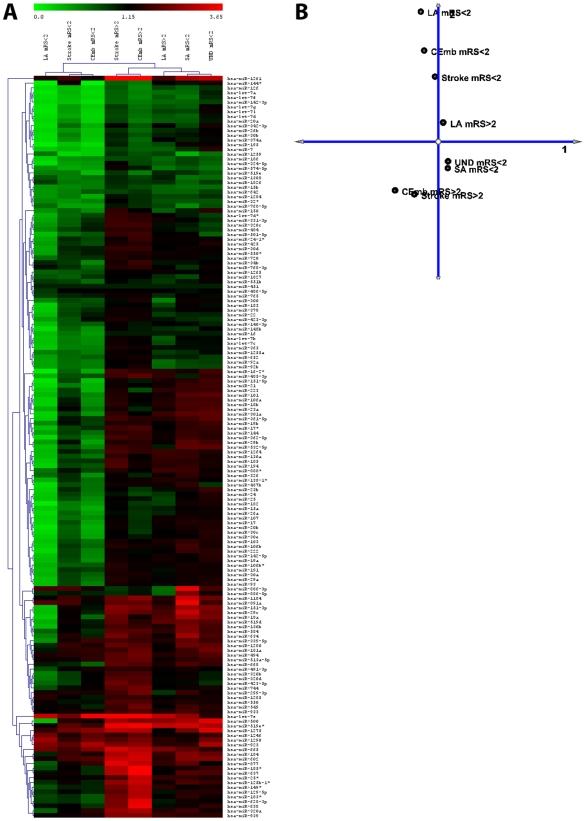BACKGROUND:
The methods currently available for diagnosis and prognosis of cerebral ischaemia still require further improvements. Micro-RNAs (small non-coding RNAs) have been recently reported as useful biomarkers in diseases such as cancer and diabetes. Researchers from the University of Malaya used LC Sciences’ miRNA microarray profiling service on peripheral blood to detect and identify characteristic patterns in ischaemic stroke.
METHODS/PRINCIPAL FINDINGS:
The ischaemic stroke patients aged between 18-49 years, characterized based on World Health Organization clinical criteria were further classified according to TOAST classification, a) Large-vessel atherosclerosis [n=8] b) Small-vessel disease [n=3] c) Cardioembolism [n=5] d) Undetermined cause [n=3]. The patients’ functional status at the time of blood sampling (at the outpatient clinics) was evaluated with the modified Rankin Scale (mRS). Blood samples from normal (n=5) individuals were used as controls. Total RNA extracted from whole blood was subjected to miroRNA profiling and real-time PCR analysis. miRNAs that are implicated in the endothelial/vascular function, erythropoiesis, angiogenesis and neural function showed differential expression profile as compared to the normal control. Interestingly, miRNAs that are involved in hypoxic conditions have also been found in our miRNA profiles.
CONCLUSION:
We demonstrate that the peripheral blood miRNAs and their profiles can be developed as biomarkers in diagnosis and prognosis of cerebral ischaemic stroke. The dysregulated miRNAs have been detectable even after several months from the onset of stroke in what is usually regarded as neurologically stable patients.
MicroRNA profiles for the stroke subtypes based on their mRS scores.
(a) The PCA analysis carried out on the pooled stroke samples. (b) Hierachical clustering was carried out for both the samples as well as the miRNAs as described. (Stroke mRS<2 (n = 15), Stroke mRS>2 (n = 4); Small artery (SA) mRS<2 (n = 3), Large artery (LA) mRS<2 (n = 6), Large artery (LA) mRS>2 (n = 2) and Cardioembolic (CEmb) mRS<2 (n = 3), Cardioembolic (CEmb) mRS>2 (n = 2) and undetermined cause (UND) mRS<2 (n = 3).
Related Service
miRNA Microarray Service – LC Sciences provides a microRNA (miRNA) expression profiling service using microarrays based on our in-house developed µParaflo® technology platform. We have standard arrays for all mature miRNAs of all species available in the latest version of the miRBase database (Release 21, July 2014). Our service is comprehensive and includes sample labeling, array hybridization, image data processing and in-depth data analysis. Two-three weeks after receiving your total RNA samples, we’ll send you both the raw and fully analyzed data. [Learn more…]
Reference
Jeyaseelan K, Lim KY, Sepramaniam S, Setyowati KD, Wang CW, Tan KS. (2009) Expression profile of MicroRNAs in young stroke patients. PloS one 4(11), e7689. [article]

